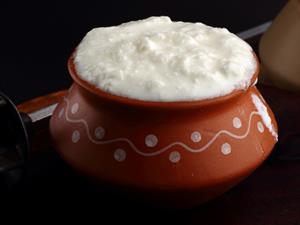
PUMPA - SMART LEARNING
எங்கள் ஆசிரியர்களுடன் 1-ஆன்-1 ஆலோசனை நேரத்தைப் பெறுங்கள். டாப்பர் ஆவதற்கு நாங்கள் பயிற்சி அளிப்போம்
Book Free DemoDo you like buns and cakes? You do, yes. Have you ever wondered why your mother's idly batter turns sour after a few hours?
Fermentation is the answer to your question. It's a chemical reaction in which a substance is broken down by yeast or bacteria into simpler products; when it comes to yeasts, the enzymes produced by the yeast speed up the reaction.
In industries, the catalysts are substances used to change the rate of a chemical reaction.
Example:
Metallic iron is used as a catalyst in the Haber process to produce ammonia. Ammonia is the basic material used to make urea, an effective agricultural fertiliser.
Finely divided nickel is used as a catalyst in the preparation of Vanaspati ghee (dalda).
Note: Catalyst is the substance that only speeds up the reaction and does not take part in the reaction. For example, in the fermentation of sugar, yeast acts as the catalyst.
As a result, catalysts increase the speed of such reactions, referred as catalytic reactions.
1. Is the curdling of milk an irreversible change?
Answer: Yes.
2. Is this an example of chemical change?
Answer: Yes.
Fermentation is an anaerobic process by which microorganisms such as bacteria or yeast chemically convert sugar into alcohol (ethanol). Fermentation occurs when the microorganisms such as yeast and bacteria break down sugar molecules into carbon dioxide and alcohol.
Fermentation is an irreversible process as the alcohol formed cannot be turned back into sugar. Thus, fermentation is a chemical change.
Curdling is a process in which a liquid state of the substance gradually turns into a solid state.
Note: Yeast and enzymes are biocatalysts.

Curdling of milk
When we add few drops of curd to the hot milk, in few minutes, the milk curdles, forming lumpy solid masses. This process can also be done by adding the lemon extract to the hot milk.
In gradual curdling, the taste of the curd is enhanced, whereas the curdling that occurs immediately by adding curd or lemon extract to hot milk doesn't taste good.
Fermented food and beverages production entirely depends on the fermentation process duration and microbes used for fermentation.
Note: In \(1822\), Louis Pasteur, a French chemist and microbiologist, was the first person to explain the fermentation process. He explained that fermentation occurs in an anaerobic condition with the help of microorganisms.
We can now conclude from the above reaction that certain chemical reactions occur with the help of a catalyst.
Who is the first person to find cure for rabies?Louis Pasteur.